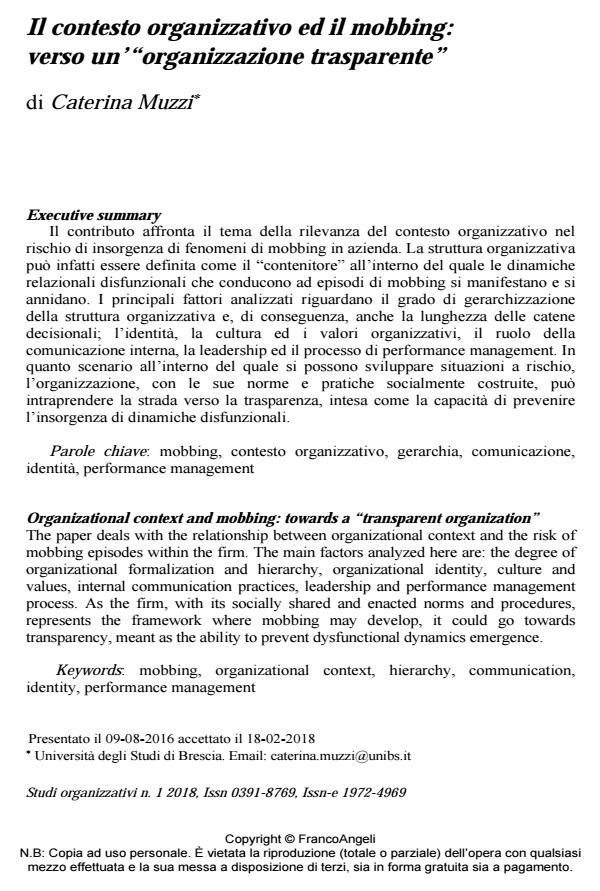Organizational context and mobbing: towards a "ransparent organization"
Journal title STUDI ORGANIZZATIVI
Author/s Caterina Muzzi
Publishing Year 2018 Issue 2018/1
Language Italian Pages 24 P. 64-87 File size 258 KB
DOI 10.3280/SO2018-001003
DOI is like a bar code for intellectual property: to have more infomation
click here
Below, you can see the article first page
If you want to buy this article in PDF format, you can do it, following the instructions to buy download credits

FrancoAngeli is member of Publishers International Linking Association, Inc (PILA), a not-for-profit association which run the CrossRef service enabling links to and from online scholarly content.
The paper deals with the relationship between organizational context and the risk of mobbing episodes within the firm. The main factors analyzed here are: the degree of organizational formalization and hierarchy, organizational identity, culture and values, internal communication practices, leadership and performance management process. As the firm, with its socially shared and enacted norms and procedures, represents the framework where mobbing may develop, it could go towards transparency, meant as the ability to prevent dysfunctional dynamics emergence.
Keywords: Mobbing, organizational context, hierarchy, communication, identity, performance management
Caterina Muzzi, Il contesto organizzativo ed il mobbing: verso un’"organizzazione trasparente" in "STUDI ORGANIZZATIVI " 1/2018, pp 64-87, DOI: 10.3280/SO2018-001003